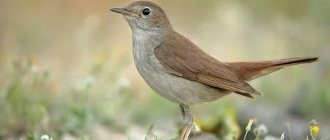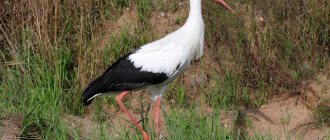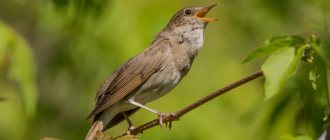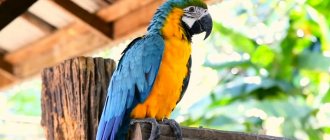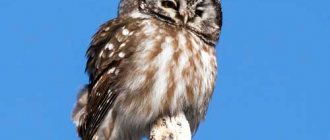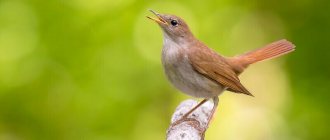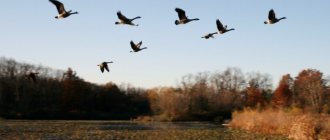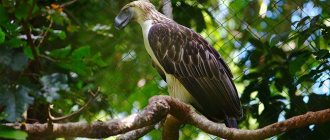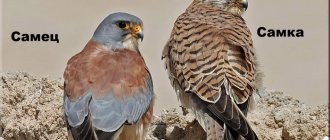The nightingale is a bird that has gained significant popularity due to its unique singing abilities. It is difficult to find a person who has not heard the name of this feathered creature. At the same time, few people know what a nightingale looks like. Many people, remembering the beautiful voice of this bird, expect that it will have bright, elegant plumage, but this is not true. Nightingales look rather inconspicuous so as not to attract the attention of predators.
The nightingale is a bird that has gained significant popularity due to its unique singing abilities.
For a long time, very little was known about the life of these unique birds, since they are secretive and try to settle far from human eyes. Nightingales are close relatives of sparrows. Currently, these birds are classified as a fairly large order of flycatchers. Thanks to long-term monitoring of them using hidden cameras and other devices, many interesting facts have now been revealed about their life in the wild.
Description of the appearance of nightingales
Both genders are similar. The adult nightingale has a brown tinged upper body and a rusty brown rump and tail. Flight feathers are reddish-brown in the light. The underparts are pale or light white, the chest and sides are light sandy-red.
On the head, the front, crown and back of the head are rusty brown. The eyebrows are indistinct, pale grayish. The chin and throat are whitish.
The beak is blackish with a pale pinkish base. The eyes are dark brown, surrounded by narrow whitish rings. The legs and feet are flesh-colored to brownish.
Young nightingales are brownish with reddish spots on the body and head. The beak, tail and wing feathers are rusty brown, paler than those of adults.
Types of nightingales
Western, found in northwest Africa, Western Europe, Turkey and Lebanon. Does not breed in Africa.
Western Nightingale
Southern , lives in the Caucasus region and Eastern Turkey, the North and South-West of Iran. Does not breed in northeastern and eastern Africa. This species is duller in color, less red on the upperparts and paler on the underparts. The chest is mostly grey-brown.
Hafiza , endemic in eastern Iran, Kazakhstan, southwestern Mongolia, northwestern China and Afghanistan. Does not breed in East Africa. This species is gray on the upper body, whitish cheeks and fuzzy eyebrows. The lower part of the body is whitish, the chest is sandy in color.
Interesting Facts
Did you know that:
- nightingales can reach speeds of up to 50 km/h;
- On April 18, 1911, the American scientist J. Helfridge discovered an asteroid and named it Luscinia - Nightingale;
- in the Ancient East it was believed that a nightingale is capable of attracting good luck with its song and increasing a person’s material well-being;
- The oldest remains of the ancestors of the modern nightingale were found in Hungary, their age is 12 million years.
- The nightingale's singing is part of the courtship ritual during the mating season.
What a nightingale sings
The nightingale sings day and night. The artistic and melodious song of the nightingale makes the greatest impression when the males compete in the silence of the night. They attract females, who return from their African wintering grounds a few days later, following the males. After mating, males sing only during the day, mainly marking their territory with song.
The song consists of loud, rich trills and whistles. There is a characteristic crescendo of "Lu-Lu-Lu-Lu-Li-Li" that is a typical part of nightingale song, which also includes clear and flute-like sections, chirps and chirps.
How does the nightingale sing?
The bird also utters a series of long phrases, "pichu-pichu-pichu-pichurrr-chi" and variations thereof. The male sings during courtship, and this song near the nest consists of plaintive "ha-ha-ha-ha". Both partners sing and maintain contact in the breeding territory. Nightingale calls include:
- hoarse “crrr”;
- hard "tek-tek";
- a whistling “wiiiit” or “wiiiit-crrr”;
- sharp "kaarr".
Video of a singing nightingale
Lifestyle and habitat
Nightingales are cautious and shy, so they choose secluded places in forests and open woodlands. The latter is a favorite because it is filled with sun. For the most part, nightingales avoid shade. Bird voices are rarely heard there .
The nightingale is not heard during the day. Birds sing at dawn and at night. At night, birds also obtain food and even mate. Birds can live in pairs or alone. Permanent residence in southern areas.
In northern latitudes, the answer to the question whether the nightingale is a migratory bird or a wintering bird is different. Russian songbirds, for example, fly to Africa during the cold weather, mainly to the territory of the Congo.
Wherever the nightingale is, the bird chooses deciduous forests. Most representatives of the genus choose a densely overgrown lower layer of bushes near a reservoir, in lowlands. Nightingales are in the minority, settling on dry hills, mountains, and sand dunes.
What do nightingales eat in nature?
The nightingale hunts invertebrates all year round, both in breeding grounds and in wintering grounds. The bird eats:
- Zhukov;
- ants;
- caterpillars;
- flies;
- spiders;
- earthworms.
At the end of summer and autumn it collects berries and seeds.
The bird feeds on the ground in fallen leaves and, as a rule, finds prey inside the dense cover. Can also pick up insects on low branches and leaves. Sometimes it hunts from a branch, falls on prey on the ground, and makes aerial pirouettes, chasing an insect.
The nightingale is difficult to see in its natural habitat due to its brown plumage that matches the color of the branches and foliage. Fortunately, the long, broad red tail allows the bird to be identified among natural cover.
When feeding on the ground, the nightingale is always active. The body is held in a slightly vertical position, moves on long legs, the bird jumps with its tail raised. The nightingale easily moves along the forest floor, makes deft jumping movements, and swings its wings and tail.
Description and features of the nightingale
The nightingale is the bird of happiness. This has been considered so in the East since ancient times. The singing of a nightingale was reputed to be an omen of happiness . Therefore, catching birds was a profitable business. Sheikhs, nobles, and emperors bought birds. Russian tsars also kept Soloviev in their palaces.
In the 19th century, in some provinces, catching songbirds was banned due to a decline in numbers. Some birds were supplied to domestic nobles, while others were sold to overseas merchants. They recognized nightingales not only by their singing, but also by:
In the East, the nightingale was considered a bird of happiness
- Body length is from 15 to 28 centimeters.
- Weighs about 25 grams.
- Olive-gray plumage. It is inconspicuous, like a sparrow's. The sides of the bird are gray, the belly is light, the back and wings are darkened. There are reddish tones at the tip of the animal's tail. Therefore, the nightingale in the photo can be confused with other passerines, for example, thrushes, to whose family it is classified. However, some ornithologists classify the hero of the article as a flycatcher. From this point of view, the bird is a relative of the nightingale - the gray flycatcher.
- The miniature beak is yellow.
- Round, black eyes. On the small head of a nightingale they look large.
- Thick and mobile neck.
- The straight cut of the tail is alternately raised and lowered by the bird while sitting. In flight, the tail is set straight.
What a nightingale looks like depends partly on the type of bird. There are 14 options available. The singing abilities of different types of nightingales also differ. There are even voiceless birds.
Listen to the voice of an ordinary nightingale
How nightingales prepare for mating season
During the breeding season, birds usually return to the same nest year after year. The male performs mating rituals, sings soft songs for the female, flaps and flares his tail, and sometimes lowers his wings. Sometimes during the rutting period the male chases the female, at the same time uttering pitiful sounds “ha-ha-ha-ha”.
Then the groom lands next to his chosen one, sings and dances, lowers his head low, flares his tail and trembles his wings.
During the fertile period, the female receives food from the contender for the heart. The partner also “guards the bride,” following her wherever she goes, sitting on a branch directly above her and observing her surroundings. This behavior reduces the likelihood of competition with other males for a female.
Reproduction and lifespan
Nightingales begin searching for a mate in the spring, usually in May. If the birds have flown in from warm regions, they wait for the buds to open and the first leaves to appear. Only then do the nightingales begin to sing. Loud trills are reserved for all females. When a specific one is chosen, the male sings to it quietly, insinuatingly.
While the male is searching, he complements the trills with flapping of his outstretched wings. After mating, the female begins to build a nest. It is composed of foliage and herbs. The latter are taken rough. Fallen leaves are used. The female builds a cup-shaped nest, on the ground, or in vegetation near the surface of the ground.
The female nightingale also hatches the chicks on her own. The male only sings for her. After the chicks are born, the father becomes silent. The trills reveal the location of the nest to predators.
Nightingale chicks in the nest
At 2 weeks of age, the chicks fly out of the nest. Until this time, both parents feed the young. Having flown out of the nest, the nightingales find themselves face to face with the world. Foxes, stoats, rats, cats, and weasels can attack and eat them. If their attacks can be avoided, the birds become sexually mature by the age of one year. By the age of 5, nightingales die of old age. In captivity, birds live 2-3 years longer.
How nightingales give birth and care for them
The breeding season varies by range, but most often occurs from late April to mid-July throughout Europe. This species usually produces two broods during the mating season.
The nightingale's nest is located 50 cm from ground level at the base of a hummock or low grass, well camouflaged by the parents among the fallen leaves. The shape of the nest is an open bowl (but sometimes with a dome), a bulky structure made of fallen leaves and grass. The inside is covered with small grasses, feathers and animal hair.
The female lays 4-5 olive green eggs. Incubation lasts 13-14 days, the female is fed by the male during this period. Approximately 10-12 days after hatching, the young birds disperse to shelters in the immediate vicinity of the nest. The young are ready to fly 3-5 days later. Both parents feed and care for the chicks for 2-4 weeks. The male takes care of the offspring, and the female prepares for the second clutch.
Nightingale feeding
The nightingale's diet consists of both protein and plant foods. From the last bird, plant seeds, berries, nuts, fruits, and thorns are selected.
The nightingale's protein diet consists of:
- ant eggs and ants themselves
- spiders
- earthworms
- caterpillars
- Zhukov
- maggots
Birds usually look for insects and small invertebrates in the layer of fallen leaves. Sitting on branches, nightingales extract prey from under the bark. In flight, birds catch bloodworms and butterflies, but songbirds rarely hunt this way.
